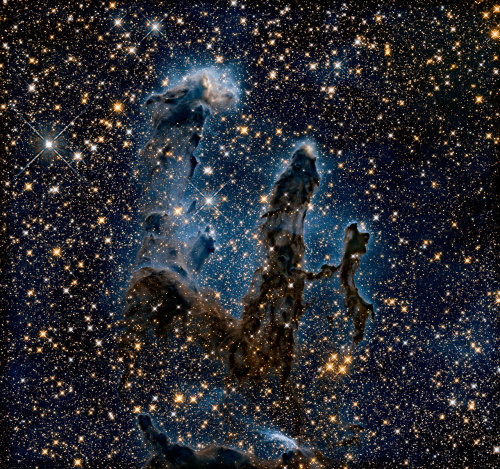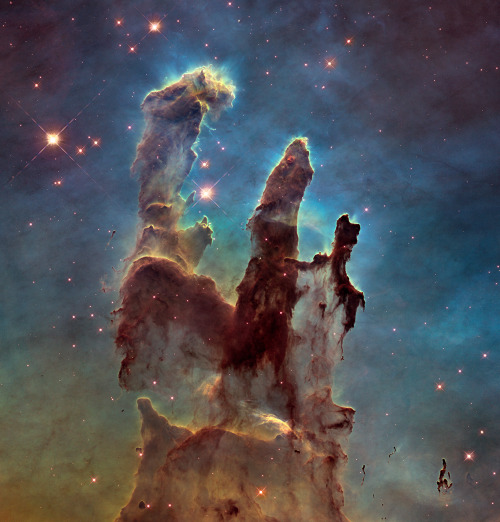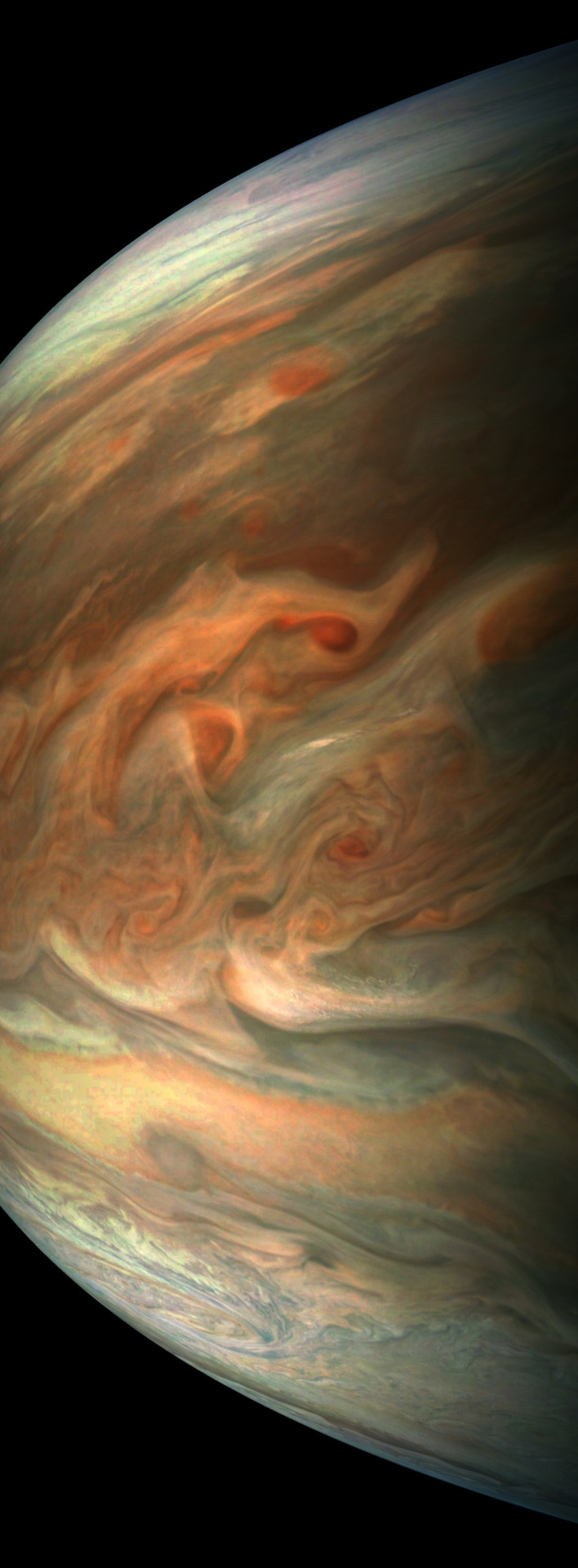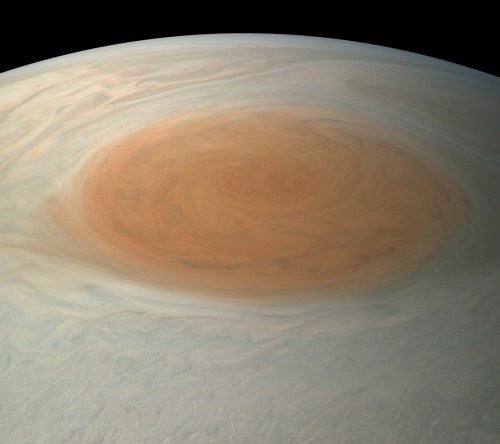Laying The Groundwork For A New Generation Of Commercial Supersonic Aircraft
Laying the Groundwork for a New Generation of Commercial Supersonic Aircraft
Cabin crew, prepare for takeoff. Engines roar; speed increases. You sip a cold beverage as the aircraft accelerates quietly past Mach 1 or around 600 mph. There’s no indication you’re flying over land faster than the speed of sound except when you glance at your watch upon arrival and see you’ve reached your destination in half the time. You leisurely walk off the plane with ample time to explore, finish a final report or visit a familiar face. This reality is closer than you think.

We’re on a mission to help you get to where you want to go in half the time. Using our single-pilot X-59 Quiet SuperSonic Technology (QueSST) research aircraft, we will provide rule-makers the data needed to lift current bans on faster-than-sound air travel over land and help enable a new generation of commercial supersonic aircraft.

The X-59 QueSST is unique in shape. Each element of the aircraft’s design will help reduce a loud sonic boom, typically produced by conventional supersonic aircraft, to a gentle sonic thump, making it quieter for people on the ground. To prove the quiet technology works, we will fly the X-59 over select U.S. communities to gauge the public’s response to the sound.

We are working with Lockheed Martin in Palmdale, California, to manufacture the X-59 and are making significant progress, despite the pandemic.

We finished the majority of work on the wing and closed its interior, marking the halfway point on construction of the aircraft.

The X-59 team at Lockheed Martin completed the final touches by fastening skins to the wing. A special sealant is applied so that fuel can be carried in the wings of the aircraft.

Moving at a steady pace, technicians continue to work on many parts of the aircraft simultaneously. The forebody section of the aircraft will carry the pilot and all the avionics needed to fly the aircraft.

Because of the X-59’s long nose, the pilot will rely on an eXternal Vision System (XVS), rather than a window, for forward-facing visibility. The XVS will display fused images from an advanced computing system and cameras mounted on the upper and lower part of the aircraft’s nose.

The aft part of the aircraft will hold an F414 GE engine and other critical systems. Unlike typical aircraft, the engine inlet will be located on the upper surface of the X-59 and is one of many features that will help reduce the noise heard on the ground.

Over the next several months, the team will merge all three sections together. After final assembly in 2021, the X-59 will undergo numerous tests to ensure structural integrity of the aircraft and that ¬its components work properly. First flight of the aircraft will be in 2022 and community testing will start in 2024, making way for a new market of quiet commercial supersonic aircraft.

Want to learn more about the X-59 and our mission? Visit nasa.gov/X59.
Make sure to follow us on Tumblr for your regular dose of space: http://nasa.tumblr.com.
More Posts from Nasa and Others
An Addition to our Space Rock Collection
On October 20th, our OSIRIS-REx mission will make its first attempt to collect and retrieve a sample of asteroid Bennu, a near-Earth asteroid. On sample collection day, Bennu will be over 200 million miles away from Earth.
Asteroids are the building blocks of our solar system. A sample of this ancient material can tell us about the history of our planet and the origins of life. Science results published from the mission on October 8th confirm that Bennu contains carbon in a form often found in biology or in compounds associated with biology.

To collect a sample, OSIRIS-REx will attempt a method NASA has never used before – called Touch-And-Go (TAG). First, the spacecraft extends its robotic sampling arm, the Touch-And-Go Sample Acquisition Mechanism (TAGSAM) – from its folded storage position. The spacecraft’s two solar panels then move into a “Y-wing” configuration over the spacecraft’s body, which positions them safely up and away from the asteroid’s surface during touch down. This configuration also places the spacecraft’s center of gravity directly over the TAGSAM collector head, which is the only part of the spacecraft that will contact Bennu’s surface.

Finding a safe sample collection site on Bennu’s rocky landscape was a challenge. During the sampling event, the spacecraft, which is the size of a large van, will attempt to touch down in an area that is only the size of a few parking spaces, and just a few steps away from enormous boulders.

The spacecraft will only make contact with Bennu for a matter of seconds - just long enough to blow nitrogen gas onto the surface to roil up dust and small pebbles, which will then be captured for a return to Earth.

We need to conduct a few tests before we can confirm we collected a large enough sample (about 2 oz). First, OSIRIS-REx will take images of the collector head to see if it contains rocks and dust. Second, the spacecraft will spin with the TAGSAM extended to determine the mass of collected material. If these measures show a successful collection, we will stow the sample for return to Earth. If sufficient sample has not been collected, the spacecraft has onboard nitrogen charges for two more attempts. The next TAG attempt would be made no earlier than January 2021.

Despite the many challenges, the OSIRIS-REx team is ready. They’ve practiced and prepared for this moment.
Join in with #ToBennuAndBack and tune in on October 20th.
Learn more about the OSIRIS-REx countdown to TAG HERE.
Learn more about the OSIRIS-REx mission HERE, or follow the mission on Facebook, Twitter and Instagram.
Make sure to follow us on Tumblr for your regular dose of space: http://nasa.tumblr.com
Solar System: From TED Talks to Data Releases
Let us lead you on a journey of our solar system. Here are some things to know this week:
1. NASA-Funded Research

It’s all just a click way with the launch of a new public access site, which reflects our ongoing commitment to provide public access to science data.
Start Exploring!
2. Red Planet Reconnaissance

One of the top places in our solar system to look for signs of past or current life is Mars. Through our robotic missions, we have been on and around Mars for 40 years. These orbiters, landers and rovers are paving the way for human exploration.
Meet the Mars robots
3. Three Moons and a Planet that Could Have Alien Life

In a presentation at TED Talks Live, our director of planetary science, Jim Green, discusses the best places to look for alien life in our solar system.
Watch the talk
4. Setting Free a Dragon

Tune in to NASA TV on Friday, Aug. 26 at 5:45 a.m. EDT for coverage of the release of the SpaceX Dragon CRS-9 cargo ship from the International Space Station.
Watch live
5. Anniversary Ring(s)

Aug. 26 marks 35 years since Voyager probe flew by Saturn, delighting scientists with rich data and images. Today, thanks to our Cassini spacecraft, we know much more about the ringed planet.
Learn more about Cassini’s mission to Saturn
Learn more about Voyager 2
Discover the full list of 10 things to know about our solar system this week HERE.
Make sure to follow us on Tumblr for your regular dose of space: http://nasa.tumblr.com


Sometimes... there’s more than meets the eye. 👀 You’re looking at two very different takes on an iconic image.
Human eyes can see only a small portion of the range of radiation given off by the objects around us. We call this wide array of radiation the electromagnetic spectrum, and the part we can see visible light.
In the first image, researchers revisited one of Hubble Space Telescope’s most popular sights: the Eagle Nebula’s Pillars of Creation. Here, the pillars are seen in infrared light, which pierces through obscuring dust and gas and unveil a more unfamiliar — but just as amazing — view of the pillars. The entire frame is peppered with bright stars and baby stars are revealed being formed within the pillars themselves. The image on the bottom is the pillars in visible light.
Image Credit: NASA, ESA/Hubble and the Hubble Heritage Team
Make sure to follow us on Tumblr for your regular dose of space: http://nasa.tumblr.com.
Solar System: Things to Know This Week
Ready for a free show? Here’s our guide to the brightest shows on Earth for 2017--meteor showers! And, there’s no telescope required.
The sky may not be falling, but it can certainly seem that way during a meteor shower. Shooting stars, as meteors are sometimes called occur when rock and debris in space fall through the Earth's atmosphere, leaving a bright trail as they are heated to incandescence by friction with the air. Sometimes the number of meteors in the sky increases dramatically, becoming meteor showers. Some showers occur annually or at regular intervals as the Earth passes through the trail of dusty debris left by a comet. Here's a guide to the top meteor showers expected in 2017.

1. Quadrantids, January 3-4
At its peak this shower will have about 40 meteors per hour. The parent comet is 2003 EH1, which was discovered in 2003. First quarter moon sets after midnight and meteors radiate from the constellation Bootes.

2. Eta Aquarids, May 6-7
This shower will have up to 60 meteors per hour at its peak and is produced by dust particles left behind by comet Halley, which has been known and observed since ancient times. The shower runs annually from April 19 to May 28. The waxing gibbous moon will block out many of the fainter meteors this year. Meteors will radiate from the constellation Aquarius.

3. Perseids, August 12-13
The annual Perseid shower will have up to 60 meteors per hour at its peak. It is produced by comet Swift-Tuttle. The Perseids are famous for producing a large number of bright meteors. The shower runs annually from July 17 to August 24. The waning gibbous moon will block out many of the fainter meteors this year, but the Perseids are so bright and numerous that it should still be a good show. Meteors will radiate from the constellation Perseus.

4. Draconids, October 7
This is a minor shower that will produce only about 10 meteors per hour. It is produced by dust grains left behind by comet 21P Giacobini-Zinner, which was first discovered in 1900. The Draconids is an unusual shower in that the best viewing is in the early evening instead of early morning like most other showers. The shower runs annually from October 6-10 and peaks this year on the the night of the 7th. Unfortunately, the nearly full moon will block all but the brightest meteors this year. If you are extremely patient, you may be able to catch a few good ones. Meteors will radiate from the constellation Draco.

5. Geminids, December 13-14
The Geminids may be the best shower, producing up to 120 meteors per hour at its peak. It is produced by debris left behind by an asteroid known as 3200 Phaethon, which was discovered in 1982. The shower runs annually from December 7-17. The waning crescent moon will be no match for the Geminids this year. The skies should still be dark enough for an excellent show. Meteors will radiate from the constellation Gemini, but can appear anywhere in the sky.
Discover the full list of 10 things to know about our solar system this week HERE.
Make sure to follow us on Tumblr for your regular dose of space: http://nasa.tumblr.com
10 Ways to Celebrate Halloween with NASA
There’s a whole universe of mysteries out there to put some fun—and maybe a touch of fright—into your All Hallows Eve festivities. Here are a few:
1. Universe of Monsters
Mythical monsters of Earth have a tough time of it. Vampires don’t do sunlight. Werewolves must wait for a full Moon to howl. Now, thanks to powerful space telescopes, some careful looking and a lot of whimsy, NASA scientists have found suitable homes for the most terrifying Halloween monsters.

2. Be a Spacecraft
No costume. No problem. NASA Blueshift offers some handy tips on transforming yourself into a powerful space telescope before hitting the sidewalk to trick-or-treat.

3. Robot Pumpkins
At Halloween, engineers at NASA’s Jet Propulsion Laboratory craft dramatic creations that have as much in common with standard jack-o'-lanterns as paper airplanes do with NASA spacecraft. The unofficial pumpkin carving contest gives engineers a chance to flex their creative muscles and bond as a team. The rules are simple: no planning, carving or competing during work hours.
The results? See for yourself!
Can’t wait to see this year’s creations? Do it yourself!



4. Skull Comet
Scientists think a large space rock that zipped past Earth on Halloween in 2015 was most likely a dead comet or an asteroid that, fittingly, bore an eerie resemblance to a skull.
"The object might be a dead comet, but in the (radar) images it appears to have donned a skull costume for its Halloween flyby," said NASA scientist Kelly Fast,
As with a lot of spooky things, the asteroid looked a lot less scary upon closer inspection.

5. Spooky Sun
Not to be outdone, the Sun—our star—has been known to put on a scary face.
In this October 2014 Solar Dynamic Observatory image, active regions on the Sun combined to look something like a jack-o-lantern’s face.
The active regions appear brighter because those are areas that emit more light and energy—markers of an intense and complex set of magnetic fields hovering in the Sun’s atmosphere, the corona. This image blends together two sets of wavelengths at 171 and 193 angstroms, typically colorized in gold and yellow, to create a particularly Halloween-like appearance.

6. Halloween on a Mission
Halloween held a special significance for NASA’s Cassini mission, which launched in October 1997. The team held its own elaborate pumpkin carving competitions for many years. The mission also shared whimsical Halloween greetingswith its home planet.
Cassini ended its extended mission at Saturn in 2017.

7. The Ghost of Cassiopeia
The brightest stars embedded in nebulae throughout our galaxy pour out a torrent of radiation that eats into vast clouds of hydrogen gas – the raw material for building new stars. This etching process sculpts a fantasy landscape where human imagination can see all kinds of shapes and figures. This nebula in the constellation of Cassiopeia has flowing veils of gas and dust that have earned it the nickname "Ghost Nebula."

8. They’re Everywhere
Turns out the human mind—including space scientists and engineers among us—find spooky shapes in many places.
This infrared view of the Helix Nebula reminded astronomers of a zombie eyeball.

9. What Do You See?
The Oct. 26 Earth Observatory’s Puzzler feature offers a spooky shape for your consideration. What is it and what does it look like? You tell us.

10. Space Candy
The trick-or-treat tradition is still—so far—pretty much confined to Earth. But thanks to the men and women who have been living aboard the International Space Station for more than 17 years, we have a preview of what a future space-based trick-or-treater’s Halloween candy haul would look like in microgravity.

Bonus: 11. Want More?
Our education team offers a bunch more Halloween activities, including space-themed pumpkin stencils, costume tips and even some mysteries to solve like a scientist or engineer.

Make sure to follow us on Tumblr for your regular dose of space: http://nasa.tumblr.com.
Does the eclipse affect airplanes at all? Would pilots have to wear special glasses, and would people inside the airplane be told not to look out of the windows?
I don’t believe it should directly impact airplanes. We are looking at how the eclipse will affect radio communications which airplanes use, but that’s something we’ll learn with the data we collect during this eclipse. Pilots will need to be careful as always to not look directly at the Sun. If you are a lucky passenger on one of the flights that will cross the eclipse, make sure to bring your eclipse viewing glasses as you will need them to look at the Sun safely https://eclipse2017.nasa.gov/safety That would be an amazing opportunity to view the eclipse from a plane as you wouldn’t have to worry about cloud cover. You may also get a longer viewing experience if you are following the path of totality! In fact, some NASA scientist are going to be flying experiments on a couple of NASA planes! https://youtu.be/R0GNqlGNZkI?list=PL_8hVmWnP_O2oVpjXjd_5De4EalioxAUi
Hot & Steamy RS-25 Engine Test

Today, we tested the RS-25 engine at Stennis Space Center in Mississippi, and boy was it hot! Besides the fact that it was a hot day, the 6,000 degree operating temperature of the hot fire test didn’t help things. This engine is one of four that will power the core stage of our Space Launch System (SLS) into deep space and to Mars. Today’s test reached 109% power and burned 150,000 gallons of liquid oxygen and 60,000 gallons of liquid hydrogen. When SLS launches with all 4 of its engines, it will be the most powerful rocket in the world!

This engine was previously used to to fly dozens of successful missions on the space shuttle, so you might be asking, “Why are we spending time testing it again if we already know it’s awesome?” Well, it’s actually really important that we test them specifically for use with SLS for a number of reasons, including the fact that we will be operating at 109% power, vs. the 104% power previously used.

If you missed the 535-second, ground rumbling test today -- you’re in luck. We’ve compiled all the cool stuff (fire, steam & loud noises) into a recap video. Check it out here:
What does actually launching into space feel like?
Hello! When preparing for a mission what are your primary concerns for the astronauts safety- what do you focus on with the most intensity to feel confident in sending a crew up?
Solar System: Things to Know This Week
Our Juno mission has been exploring Jupiter since July 2016 with a special passenger on board: JunoCam, an instrument designed to take spectacular close-up color images of the largest planet in our solar system. From the raw images, citizen scientists have processed a range of beautiful photographs that highlight Jupiter's features, even turning them into works of art. Below, 10 stunning images JunoCam has given us over the past year.
1. Jovian tempest.

This color-enhanced image of a massive, raging storm in Jupiter's northern hemisphere was captured by our Juno spacecraft during its ninth close flyby on Oct. 24, 2017. The storm is rotating counter-clockwise with a wide range of cloud altitudes, and the darker clouds are expected to be deeper in the atmosphere than the brightest clouds.
2. A southern stunner.

Jupiter's southern hemisphere shows off in beautiful detail in this image taken on Oct. 24, 2017. The color-enhanced view captures one of the white ovals in the "String of Pearls," one of eight massive rotating storms at 40 degrees south latitude on the gas giant planet.
3. Dreaming in color.

Artist Mik Petter created this unique digital piece using data from the JunoCam. The art form, known as fractals, uses mathematical formulas to create an infinite variety of form, detail, color and light. The original JunoCam image was taken on July 10, 2017.
4. Jovian moon shadow.

Jupiter's moon Amalthea casts a shadow on the gas giant planet in this image taken on Sept. 1, 2017. The elongated shape of the shadow is a result of both the location of the moon with relation to Jupiter in this image as well as the irregular shape of the moon itself.
5. 95 minutes over Jupiter.

Once every 53 days, Juno swings close to Jupiter, speeding over its clouds. In about two hours, the spacecraft travels from a perch over Jupiter's north pole through its closest approach (perijove), then passes over the south pole on its way back out. This sequence shows 11 color-enhanced images from Perijove 8 (Sept. 1, 2017) with the south pole on the left (11th image in the sequence) and the north pole on the right (first image in the sequence).
6. Soaring high.

This striking image of Jupiter was taken on Sept. 1, 2017 as Juno performed its eighth flyby. The spacecraft was 4,707 miles (7,576 kilometers) from the tops of the clouds of the planet at a latitude of about -17.4 degrees. Noteworthy: "Whale's Tail" and "Dan's Spot."
7. In true color.

This true-color image offers a natural color rendition of what the Great Red Spot and surrounding areas would look like to human eyes from Juno's position. The image was taken on July 10, 2017 as the Juno spacecraft performed its seventh close flyby of Jupiter.
8. The 'face' of Jupiter.

JunoCam images aren't just for art and science—sometimes they're created for a good chuckle. This image, processed by citizen scientist Jason Major, is titled "Jovey McJupiterface." By rotating the image 180 degrees and orienting it from south up, two white oval storms turn into eyeballs, and the "face" of Jupiter is revealed. The original image was taken by the Juno spacecraft on May 19, 2017.
9. Bands of clouds.

This enhanced-color image of Jupiter's bands of light and dark clouds was created by citizen scientists Gerald Eichstädt and Seán Doran. Three of the white oval storms known as the "String of Pearls" are visible near the top of the image. Each of the alternating light and dark atmospheric bands in this image is wider than Earth, and each rages around Jupiter at hundreds of miles (kilometers) per hour. The lighter areas are regions where gas is rising, and the darker bands are regions where gas is sinking. Juno captured the image on May 19, 2017.
10. The edge.

This enhanced-color image of a mysterious dark spot on Jupiter seems to reveal a Jovian "galaxy" of swirling storms. Juno captured this image on Feb. 2, 2017 and citizen scientist Roman Tkachenko enhanced the color to bring out the rich detail in the storm and surrounding clouds. Just south of the dark storm is a bright, oval-shaped storm with high, bright, white clouds, reminiscent of a swirling galaxy. As a final touch, he rotated the image 90 degrees, turning the picture into a work of art.
To learn more about the Juno mission at Jupiter, visit: www.nasa.gov/juno.
Follow the Juno mission on Facebook, Instagram and Twitter.
Make sure to follow us on Tumblr for your regular dose of space: http://nasa.tumblr.com.
-
 bitesizedabby liked this · 3 years ago
bitesizedabby liked this · 3 years ago -
 dreibird reblogged this · 3 years ago
dreibird reblogged this · 3 years ago -
 slowlyfadingforever11 liked this · 3 years ago
slowlyfadingforever11 liked this · 3 years ago -
 pluckmybreads liked this · 3 years ago
pluckmybreads liked this · 3 years ago -
 pk-17 liked this · 3 years ago
pk-17 liked this · 3 years ago -
 furrytreasurehunter liked this · 3 years ago
furrytreasurehunter liked this · 3 years ago -
 defendthis liked this · 3 years ago
defendthis liked this · 3 years ago -
 elaboratelysimple liked this · 3 years ago
elaboratelysimple liked this · 3 years ago -
 burninghydrocarbon reblogged this · 3 years ago
burninghydrocarbon reblogged this · 3 years ago -
 strstruckcomiccsanimeoperator liked this · 3 years ago
strstruckcomiccsanimeoperator liked this · 3 years ago -
 pinkiepieaddict reblogged this · 3 years ago
pinkiepieaddict reblogged this · 3 years ago
Explore the universe and discover our home planet with the official NASA Tumblr account
1K posts